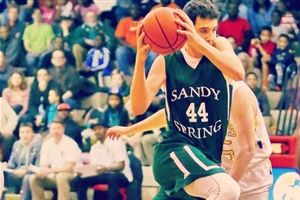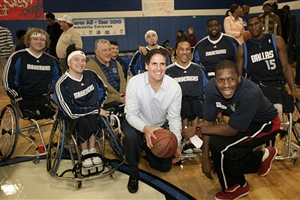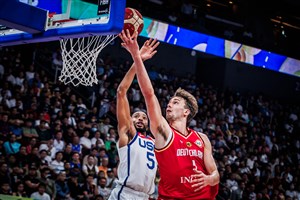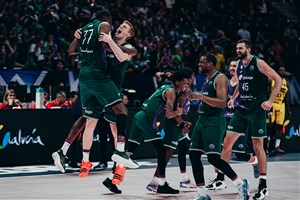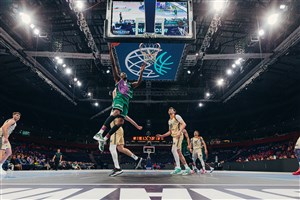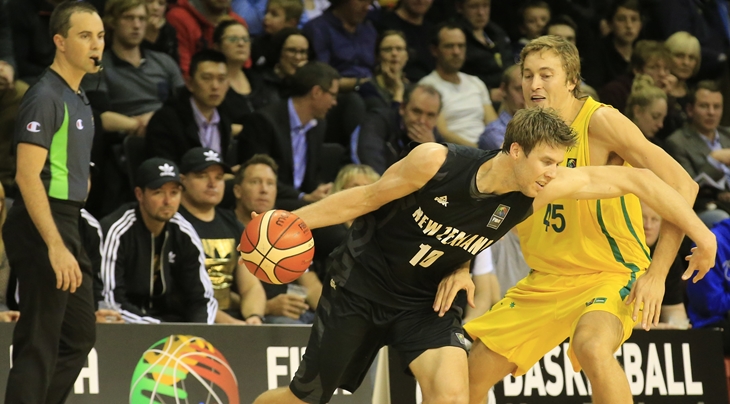
Time for big picture education?
MELBOURNE (Paulo Kennedy's View from Downunder) - This week's column was going to take a look at the work of new NBL referees manager Scott Butler and what he's trying to implement around the league, and hence with our international refs.
As I've mentioned in previous columns, the line between national leagues and international officiating is about to become much finer with the introduction of FIBA's New Competition System.
No longer will players and referees get a few weeks of international practice games to adjust to the differences in styles, they will be stepping straight in and out of each comp during FIBA Basketball World Cup qualifying windows, and that will present challenges.
From an Oceania perspective, while the NBL is a privately-owned league, it employs the best referees Downunder, who are mostly likely to be whistling the FIBA Basketball World Cup 2019 Qualifiers. This makes the crossover between the different organisations important, a situation not unique to Australia.
The reason I'm taking this column on a bit of a tangent is that while watching this season's NBL, I've been struck by the degree to which Butler's influence is limited, despite his level of expertise and experience.
I believe a widespread education approach, with referees, players and coaches undergoing the same training, is a good way to consistently bring out the best in our national league.
Old habits
In the past four seasons, we have seen Mal Cooper, Alby Joseph and Butler take over the reins, all men with fantastic knowledge and experience of the NBL or FIBA play, and in the case of Butler, both.
Yet, while each has made certain changes - most notably Cooper in his first season - in essence the way the game has been called for many years now is very similar, and the word coaches, players and fans keep coming back to is consistency.
Ironically, it is the coaches and players over many years who have created such inconsistency. Starting in the 1990s, while trying to gain a competitive edge, top teams pushed the physical boundaries further and further.
Over the course of 15-20 years, every team has adopted that approach, which has been left largely unchecked by a lack of leadership from successive league HQs, the ingrained habits of the players and referees’ own fear of being seen to 'over call' the game and 'make it about them'.
Those last two are accusations often leveled at our whistleblowers. This is unfortunate, because the style of play that has evolved means players will push the limits until referees step in, leading to just as many whistles whether refs choose to let play go or call it tightly.
How much difference?
Consider this: over the past four seasons the average number of fouls called in the NBL has been in the 40-41 per game range every season, despite the different philosophies from three different referees managers across that span.
The year before, in 2012/13, that figure was 38 fouls per game but produced the most dour season in league history, with the lowest scoring rate and lowest field-goal percentage.
Here's the thing, many hoops fans think calling the game tightly leads to too many whistles and too many free throws. Yet from the 'let it go' approach of 2012/13 to the 'call it tight' mantra of 2013/14 under Cooper, fouls per game and free throws per game only increased by three in total.
However, field goal percentage rose three percentage points from around 42.5 to 45.5, three-point percentage from around 33 to 36, assists rose and turnovers dropped. In short, calling the game tighter gave offensive players more space to shine while adding very few stoppages.
There was such a relatively small increase in fouls and free throws because players and coaches adjusted. In the three years following the 2013/14 crackdown more contact has been allowed yet there have been more free throws per game.
The reality is players and coaches will push to wherever the limit is set by officials, meaning it's likely there will always be a similar amount of fouls called no matter how much contact is allowed in the name of 'letting the game flow'.
Getting technical
The problem with letting the game go is you effectively stop calling the game consistently by the rules of basketball. Less onus is placed on players defending correctly and the result over a long period of time has been a poor level of defensive technical proficiency amongst NBL players.
Don't believe me? Speak to the coaches of the Boomers and Tall Blacks about the period of time it often takes NBL players to adjust to international refereeing. There isn't a large incentive for NBL coaches to teach defence to the letter of the law because it doesn’t give their team much advantage in this league.
The other downside is a lower level of technical proficiency amongst our officials who don't get in the habit of calling the game consistently. Think about how often you see these situations in an NBL game:
- A defensive player initiating contact with the player with the ball
- A defensive player stepping forward into a shooter, usually in the low post
- A defensive player at no stage establishing position adjacent to an offensive player before contact
- A defensive player taking an airborne player’s place to land
These four examples are all well covered by the rules of basketball, however they are all called inconsistently, which reduces incentives for players to approach them in a consistent way. That creates scrappy and unpredictable play.
Now, this certainly isn’t a finger pointing exercise at current referees or players, they have inherited this from past refs and players.
This is why I say there are limitations on what Butler can achieve in isolation. No matter how well he reviews each game, he is battling a lifetime of habits of all on court. That's a battle that is hard to win.
We don't need no education
What Butler needs to maximise his efforts is the decision makers at the NBL, preferably in consultation with Basketball Australia (BA) and FIBA, to examine how it would like the game to look, and hence be called.
The product in recent years has been good, and this year is no exception, however with a more consistent and predictable approach we can see the best of the NBL more often.
The next step once a preferred product is established is to to assume zero knowledge amongst players and referees around the competition.
This isn't because they know nothing, but because an approach that builds from the base up creates a consistent understanding. That means investing time teaching the basics to coaches, players and referees.
I'm not just talking about points of emphasis, or providing reviews of games, I'm talking about in-depth video and on-court sessions explaining the fundamentals of the rules, and what that means technically for players and coaches.
With Butler, Michael Aylen and Vaughan Mayberry now dedicated full time, there is realistic potential for this to be delivered.
What does an illegal screen look like? What is a charge and what is a block? What can a defensive player do when his player catches the ball? What can he do when his opponent is cutting? Can a player be in legal position if side-on to the ball-handler?
These and more are all questions the powers that be need to settle on answers to, because at the moment there are often multiple answers to each in the very same game of basketball.
This education isn't something that can be done mid-season. However the teaching should begin next June/July when NBL clubs resume pre-season.
Invest in education in the pre-season and by the time the real season comes around the product will be much better for it. This should also help our referees step into FIBA duty more easily come November 2017.
Money talks
Cooper made a good point recently when he claimed there was not enough accountability for NBL refs, and that his efforts to introduce such were met with strong resistance.
That's hardly surprising. Almost all NBL refs are part-time, there is a relatively small pool and their job is incredibly tough in a fast-paced and unpredictable league.
Rather than punishing poor performance, the focus should be on rewarding those who adhere to the style of officiating the league wants. This may mean NBL ownership investing a little more money into refereeing for next season, but better officiating results in a better product which can draw more revenue.
The current inconsistencies lead to scrappy play which hinders the league’s ability to attract casual viewers, particularly on TV. So set the base wage(s), and then add attractive incentives for adhering to the vision for the game that the NBL and its partners have, and promote those refs who achieve those goals.
If referees have something consistent to aim for, and players and coaches have something consistent to expect, then maybe the ‘c word’ becomes a happy one in the NBL lexicon.
This is a model that will require input from administrators, referees, players and coaches before it is rolled out, and if is successful it could be adapted for anything from junior basketball to the FIBA Basketball World Cup to help bring all involved onto the same page.
Paulo Kennedy
FIBA
FIBA's columnists write on a wide range of topics relating to basketball that are of interest to them. The opinions they express are their own and in no way reflect those of FIBA.
FIBA takes no responsibility and gives no guarantees, warranties or representations, implied or otherwise, for the content or accuracy of the content and opinion expressed in the above article.

